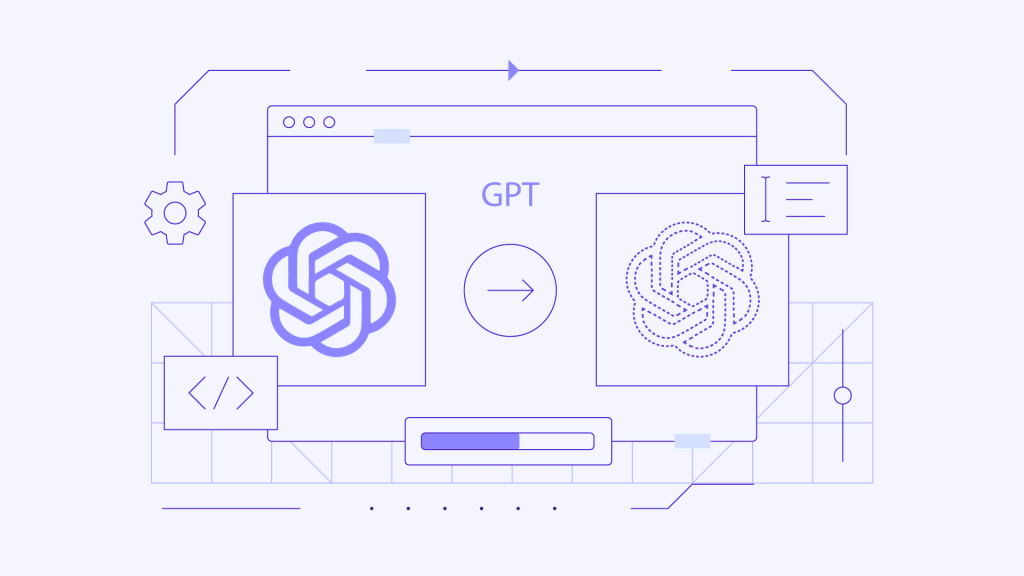Generative AI: What It Is, Common Use Cases, and Future Trends
Generative artificial intelligence (AI) models, or Gen-AI for short, started as a way to create chatbots. However, these chatbots became good at having conversations only when Large Language Models (LLMs) appeared.
Now, generative AI is an advanced computer program that can produce a wide range of creative content, including images, stories, and music, based on user prompts. Simply put, a generative AI model analyzes all the given information or accesses it online and uses the data to make brand-new content.
This article will guide you through the world of Generative AI, how it works today, and future trends. We’ll also go over some of the most popular tools to illustrate how you can use generative AI to create images, produce text, and build a website.
What Is Generative AI?
Generative AI is an advanced-level program that can create content based on various input methods. Generative AI models generate code, well-structured articles, photorealistic images, video, and audio, pushing the boundaries of AI technology.
How Does Generative AI Work?
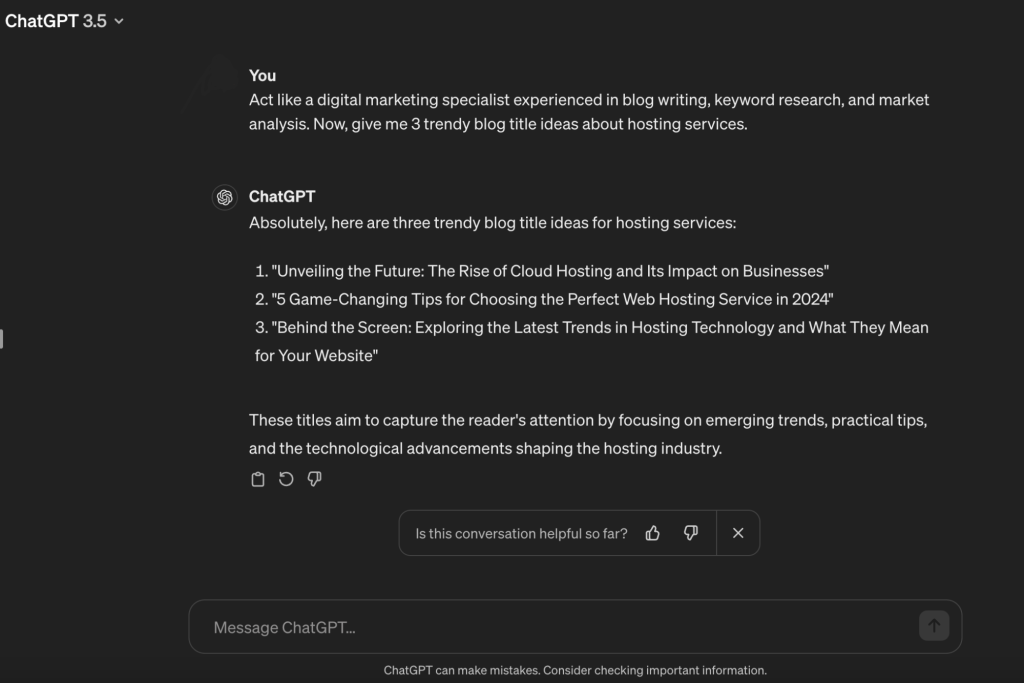
Developing generative AI models starts with collecting a vast amount of training data, which can include text, pictures, code, and even audio clips.
Thanks to natural language processing and machine learning algorithms, AI can interpret this data and understand human language. This enables AI to respond to well-crafted prompts and create what you asked for – whether that’s an informative answer, detailed instructions, or an image.
However, note that artificial intelligence isn’t just for creating content and images for blog posts. This innovation is also used for scientific research, product design, website building, and many other fields.
The exact way generative AI technologies work depends on the results you want to achieve. Gen-AI uses different machine learning systems and models to do various tasks like data sampling, image generation, or code creation.
Generative AI Models
Let’s explore the most popular generative models and their use cases. We will also look into how they conduct AI research and train to produce better results.
Generative Adversarial Network (GAN)
Generative adversarial networks consist of two neural networks – a generator that creates synthetic data and a discriminator that tries to distinguish between real and fake data.
Simply put, a creator competes with a critic to make more realistic and creative outputs. This competition is like training, as the creator part keeps improving based on the critic’s feedback.
GANs are especially good at creating pictures. In addition to creating content, you can use it to design new characters or make photorealistic portraits.
Variational Autoencoder (VAE)
The variational autoencoder model works in two parts. The first one is the encoder – it analyses input data into very small parts, enabling the decoder to create absolutely new content from those tiny parts.
Then, the decoder acts like a creative writer. It takes those key points from the encoder and uses them to produce new content, like writing a whole new story from a book summary.
The VAE is excellent for tasks like data analysis and compression, as well as quick content creation. However, the quality of generative AI outputs heavily depends on the data complexity.
Transformer-Based Models
This AI technology is based on large language models that enable it to understand and interpret human language. Thanks to the transformer architecture and self-attention mechanism, these generative models can pay attention to all words simultaneously, no matter their position and text length.
As a result, it can assist you with various writing-related tasks, including translating, answering questions, or conducting research by analyzing a large amount of raw data. Additionally, you can use generative AI to create various types of text from scratch, such as research papers, movie scripts, or even funny social media posts.
A good example of such a tool is ChatGPT, which generates responses based on input text.
Autoregressive Models
Opposed to the transformed-based approach, autoregressive models can’t focus on all words in the text simultaneously. Instead, they analyze the text sequence-by-sequence.
For this reason, this machine learning algorithm might give better results when working with shorter forms of text. As it relies solely on the preceding phrases, it might struggle to interpret the whole text at once. On the other hand, transformer-based models might not notice certain relations between sequential phrases.
Simply put, autoregressive models are like careful storytellers who build things piece by piece from the training data they get.
Diffusion Models
Unlike transformer-based or autoregressive AI systems, diffusion models don’t predict the next token based on preceding information. Instead, generative AI in diffusion models focuses on how information gradually spreads through a sequence of data.
A diffusion model often uses denoising score-matching techniques to understand the entire process step-by-step. As a result, this technology excels at creating high-quality work, particularly images or videos.
However, training diffusion models requires significant computational resources due to the complexity of the model architecture.
Most Common Generative AI Use Cases
By 2030, AI is expected to create 133 million new jobs across industries, with endless possibilities. With this in mind, let’s discuss how Generative AI is transforming big industries.
Creative Arts
The generative AI model helps artists compose new songs, write new scripts, and edit already-created content.
Thanks to sophisticated video generation techniques, AI is excellent for adding stunning effects, immersive animations, and dynamic storytelling elements. It can also edit images seamlessly.
Besides implementing generative AI to create a product from scratch, you can use it to brainstorm and consult to develop better products.
Gaming Industry
Generative artificial intelligence can design characters with detailed backstories and lifelike visuals. These characters could roam through vast, realistic landscapes generated by AI or explore dynamic worlds that change based on your choices, completely changing the gaming industry.
Game creators are already working with next-level technology where real-time interaction with AI creates characters based on your choices as you play. These AI-powered gaming experiences will infuse high-quality experiences with personality and creativity.
Business and Marketing
Thanks to generative artificial intelligence, designing a new product based on market trends is now very easy. Marketing analysis becomes a conversation because you prompt AI to analyze what you need, and it delivers the result. Most importantly, generative AI applications can perform multiple tasks.
Businesses can even use AI-powered chatbots to provide smooth, personalized customer support. This way, you can save on customer support costs while delivering an excellent user experience.
Conversely, many generative AI models can help marketers create creative content, such as engaging posts, captions, images, or videos, for their content marketing platforms. Marketers can work with this generative AI system to create winning content strategies and write engaging blog articles or summaries quickly and easily.
Research and Development
AI systems can help you analyze complex data in vast amounts of information and summarize research papers in a second with some prompts. Its deep learning method can work with any labeled or raw data samples.
AI can not only analyze massive datasets but also predict potential outcomes based on that data. Researchers can simulate research findings before even experimenting. This incredible ability leads to breakthroughs across industries, from accelerating drug discovery in medicine to designing innovative aircraft in aerospace.
Education and Training
Generative AI helps the education system upgrade the learning process by creating interactive learning materials and delivering them to the right audience at the right time.
This advanced learning machine can both learn and teach in a way that’s easy to understand. For instance, it can break down a large or complex math problem part by part for better understanding, like a real math tutor. This technology even considers your IQ level to design the perfect learning strategy.
Generative AI acts as a tutor and guides individuals on their educational journeys to make it more efficient, effective, and enjoyable for everyone.
Advantages of Using Generative AI
Generative AI is taking content creation, innovation, and automation to the next level. Let’s go over the main benefits AI algorithms bring to the world.
Innovation and Automation
Generative AI can turn your idea into reality even if you don’t have any technical knowledge.
For example, you can use generative AI to create code snippets for your project. AI can also help you find solutions to your problems by conducting research and giving instant answers. This helps you innovate without spending so much time on the technical things.
Finally, you can use generative AI systems to brainstorm new ideas.
As for automation, you can leave manual and repetitive tasks for AI and focus on higher-level strategic and creative tasks yourself.
Personalization and Customization
Generative AI can customize the content based on your taste and preference; you only need relevant data and a prompt. The entertainment industry is changing with the use of machine learning AI in script writing, character design, and production based on specific audiences.
Meanwhile, the fashion industry uses this technology to generate personalized designs, patterns, and styles that can meet particular customers’ requirements.
Accessibility and Inclusivity
If you want content that everyone can enjoy and feel included in, then Generative AI is the answer. It helps break down barriers as you can prompt AI to write content from another perspective.
AI also enables all individuals, either nontechnical or disabled, to participate in this creative process. For example, those with visual impairments can use speech-to-text technology in deep generative models to engage with written content. At the same time, people with mobility limitations can efficiently utilize voice commands to navigate digital platforms.
In addition, AI can make your site more accessible by inserting alt text, providing suggestions on website navigation, color contrasts, and more.
Limitations of Using Generative AI
Just like every new technological advancement, Generative AI also has disadvantages and limitations.
Data Biases and Unpredictable Results
A generative AI model depends on the data it receives during its training session or when creating any outputs.
Suppose the provided information contains errors or biases. In that case, any AI-created content can have mistakes or biased results due to its inability to distinguish between real and fake information in its training data.
Additionally, AI algorithms can sometimes produce content that is nonsensical, irrelevant, or not what you intended. Because of this, we strongly recommend double-checking what AI creates before sharing it.
Limited Creativity
Generative AI works with creative tasks on a large scale. Users need to give it the correct information and instructions, and these machine-learning models can create all sorts of content.
However, AI doesn’t have the human intelligence to create truly unique content or ideas. Generative AI models simply take all the data they can get and mix it up in new ways.
Ethical Concerns
One of the main ethical concerns related to using AI for content creation is originality. Since AI uses existing information, its content raises copyright issues.
Another big concern is the creation of deepfakes. With this technology, users can generate ultra-realistic AI-generated photos or videos of anyone to make them do or say something they never did.
Lastly, there is the data privacy issue. It is essential to ensure that AI does not use people’s sensitive information or personal data unexpectedly.
Computational Cost
Generative AI costs a lot, both in terms of money and the environment. The training and running of these models require immense processing power, which is expensive and energy-intensive. This can create a financial barrier for smaller companies and negatively impact the environment.
While it holds immense potential, this dependence on big companies could lead to a situation where only a few control this powerful tool. These organizations should keep generative AI accessible.
Generative AI Tools
After discussing AI advantages and limitations, let’s go over some of the best tools for various tasks, including content creation, image generation, video editing, and more.
Visual Art or Images – DALL·E
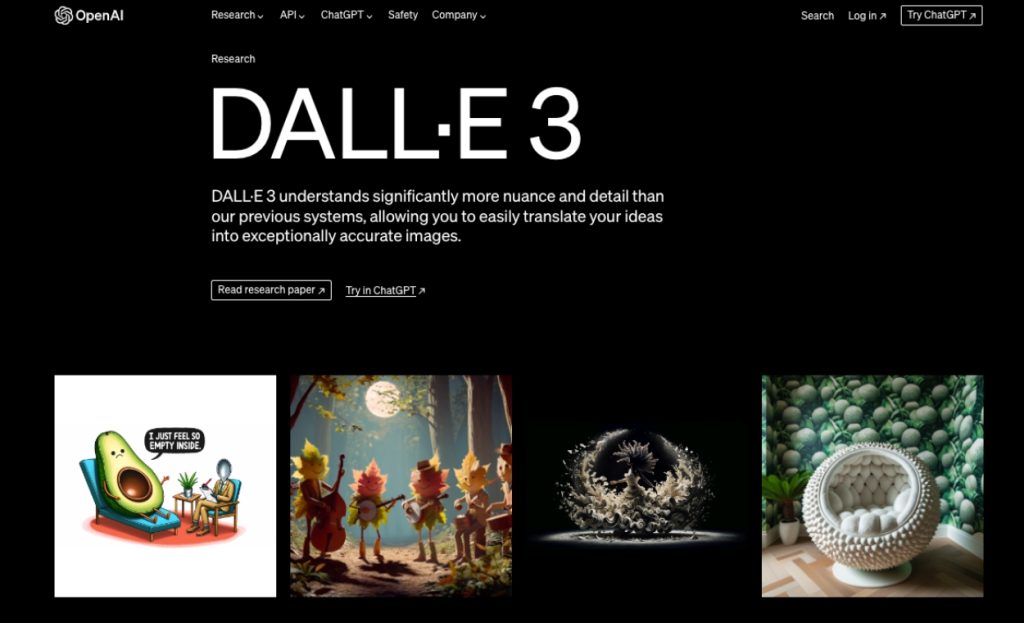
OpenAI’s DALL·E is an advanced text-to-image generation model. Users can simply describe the image they want, and this AI tool will create it.
Built on ChatGPT, this generative AI can understand complex concepts and generate images that follow specific styles or aesthetics.
However, you need to be mindful of your prompts and double-check the images, as this machine-learning model can produce fake pictures and violent or hateful content.
DALL·E 3 is now available for ChatGPT Plus users at $20/month.
Writing or Research – Gemini
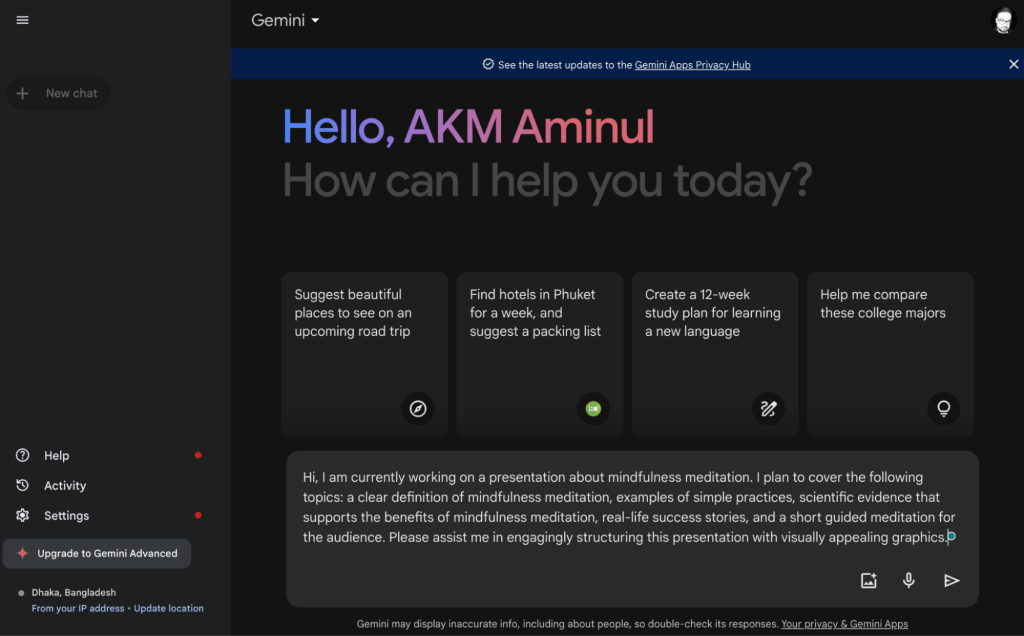
An upgraded version of Bard, Gemini is Google’s latest Generative AI assistant. It combines Google AI’s most powerful language models to assist users with writing, brainstorming, learning, planning, and other tasks.
In addition, it is compatible with Gmail and Google Drive, helping you find relevant information more quickly.
Besides writing articles, blog posts, emails, and any other content, Gemini can also produce images. However, this functionality is still being developed, so other tools might provide better quality when it comes to images.
As Gemini is a free AI model, anyone with a compatible device can use it for free. For access to more advanced features, consider updating to the Google One AI Premium Plan for $19.99/month.
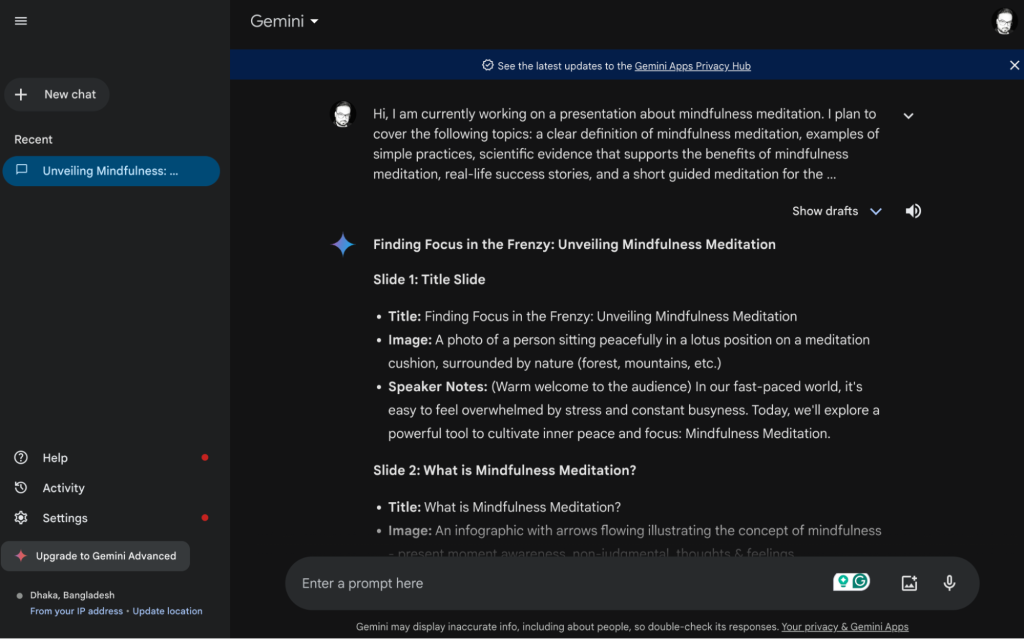
Music – AIVA
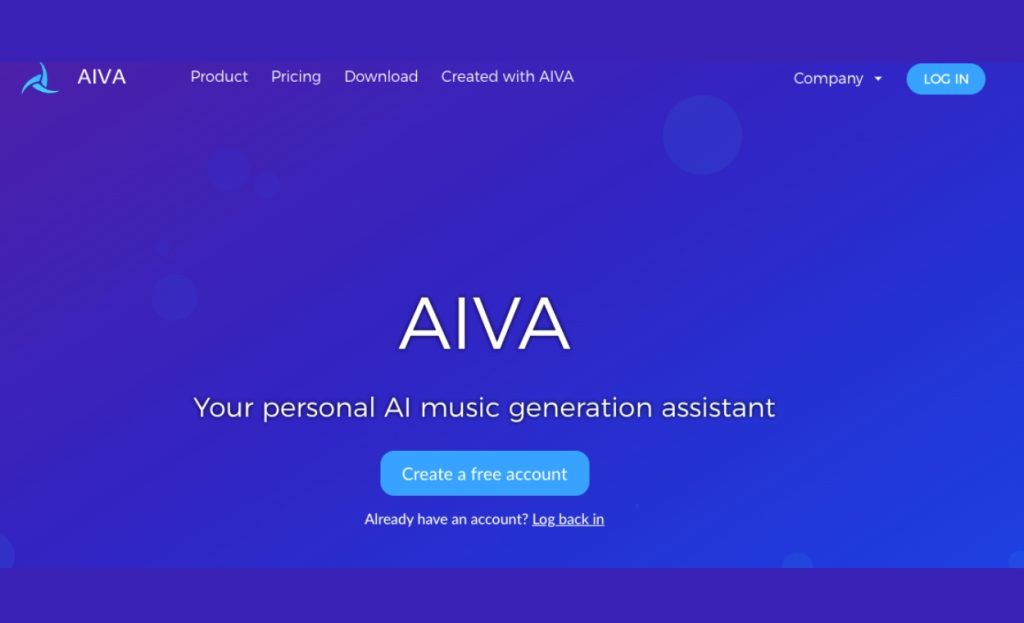
AIVA is an advanced artificial intelligence tool for music generation. It enables musicians and creators of all skill levels to produce original music across 256 genres, including classical, electronic, cinematic, and pop. Users don’t need deep music knowledge or a good sound system to use this tool.
Additionally, you can use AIVA as a creative partner to brainstorm ideas and generate theme variations to refine your compositions. You can even personalize the generation process by training AIVA on their music or specific influences to achieve a unique sound.
With AIVA’s free plan, you can create a few short pieces of music and explore the basic features of this platform. To own your music created with AIVA, you will have to opt for its Pro plan, starting at $33/month.
Video Editing – Adobe Premiere Pro

One of the refined video editing software is Adobe Premiere Pro, which is now fully functional with advanced AI tools for video editing, making editing more creative and efficient.
These features automate time-consuming tasks and provide intelligent editing suggestions, such as auto-color and auto-tone options, color corrections, audio transcription, video caption generation, and removing unwanted objects by filling in the gap with realistic background details.
Be sure to check whether your device can handle the system requirements, as this AI tool needs a powerful machine.
For individual needs, the Premiere Pro plan for $20.99/month is sufficient.
Website Building – Hostinger Website Builder
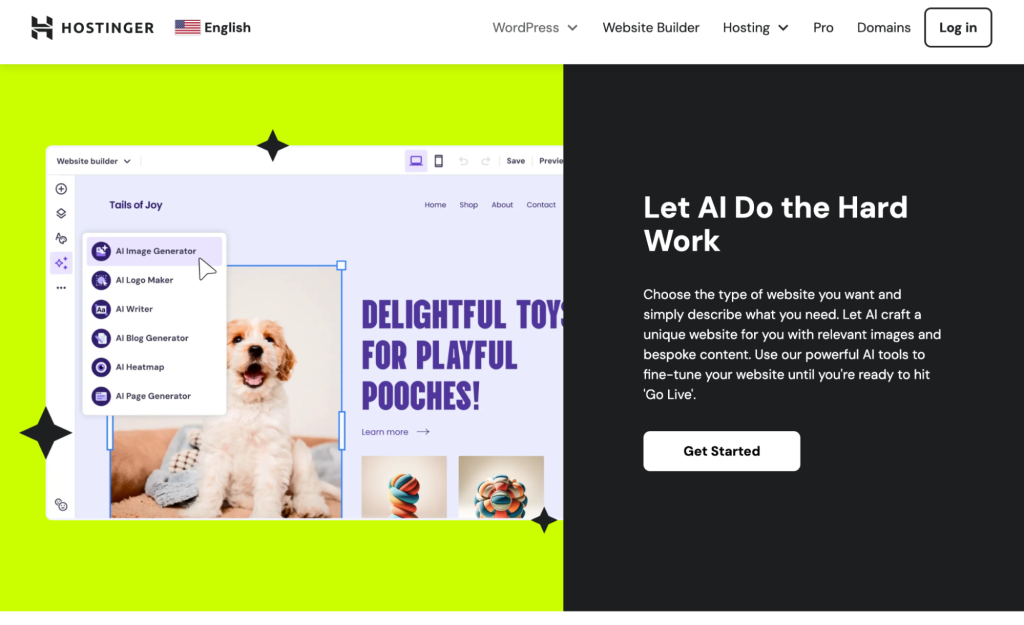
Hostinger Website Builder uses AI to simplify the website-building process to the three-question survey – you will simply have to describe your idea and watch as generative AI creates your website.
Then, you can customize the site with a drag-and-drop editor, which eliminates the need to code or have any technical knowledge. For further web development, our website builder offers a wide variety of AI tools – AI Writer for content creation, AI Heatmap for predicting client behavior, AI Image Generator for adding captivating visuals, and AI SEO tools for ranking higher on search engines.

Should you need any guidance, simply open a chat with AI Assistant or reach out to the Customer Success team anytime.
While you can create a fully functional and AI-powered website for just RM7.99/month, you will have to opt for the Business Website Builder to access all AI tools, starting at RM13.99/month.
Future Trends in Generative AI
Generative AI started a new era – let’s discuss how it’s going to shape our future.
Breakthroughs on the Horizon
Advanced AI tools such as ChatGPT, DALL·E, and Sora create incredibly realistic images and videos that challenge the distinction between reality and simulation. This can be used in a new age of filmmaking, education, and product design.
With these AI tools, we can see movies that are crafted without the restrictions of physical limitations, classrooms that offer immersive experiences that bring historical events to life in stunning detail, and product designers who can create virtual prototypes and test their creations before building a physical model.
Right now, the most significant challenge with AI is understanding how it makes decisions. Researchers are working on making these models more transparent, like Explainable AI (XAI) initiatives, so we can see how AI arrives at its hyper-realistic creations. This transparency is crucial for building trust and ensuring the responsible development of this powerful technology.
AI Across Industries
In the healthcare sector, Generative AI might help doctors by studying patients’ information to recommend personalized treatments or diet plans. It could also assist in finding new medicines by creating new molecule designs.
At home, AI could make any appliances more smarter. For instance, our fridge could suggest what to buy and recipes based on what’s inside. A smart TV might recognize our mood and play shows accordingly.
Generative AI could also be used as a teacher, especially in rural areas where finding specialized tutors is hard. Some organizations are already trying this out. AI tutors wouldn’t just teach lessons but also create interactive learning materials and tests based on students’ performance.
The Responsibility of Power
As Generative AI models become more advanced, it’s important to remember that social and ethical concerns will always exist. These AI models learn from the data we provide, so we must ensure we collect data reasonably, legally, and ethically. The fact that AI can create highly realistic content raises worries about deepfake videos being used to spread false information.
AI also takes over some creative tasks, which might affect jobs. However, learning to use AI to create content more efficiently is the key. AI isn’t here to replace jobs but to work alongside people as creative partners.
Conclusion
Generative AI can make highly realistic visuals and customize user experiences in every field, from creative arts and gaming to education. It helps nearly every professional, whether you are a digital marketer, a graphic designer, or a doctor.
As AI becomes more advanced and powerful, it has to ensure fairness, transparency, and responsible development. If we handle these challenges well, Generative AI can do much good.
However, there still are some concerns regarding data privacy, copyright, and data biases.
If you have any more questions or feedback, don’t hesitate to leave a comment below.
Generative AI FAQ
Here are some frequently asked questions about Generative AI:
What’s the Difference Between AI and Generative AI?
The regular AI model analyzes the given data and solves one specific problem, whereas Generative AI analyzes the data to create various new content types, from text to videos.
Can Generative AI Create Original Content?
As generative AI can create new content only from the data it gets, it won’t generate entirely new content. However, it will produce a unique combination of existing datasets.
Are There Any Ethical Concerns Regarding Generative AI?
Yes. If you provide biased data, the output will also be manipulated. Plus, people can use its power to create deepfake videos, which can be misleading and spread misinformation.
Additionally, there are some ethical concerns regarding data privacy and copyright issues, as AI can produce fairly similar content to the existing one.
How Can I Implement Generative AI in My Own Projects?
Many Generative AI tools are available online, and most offer free service for specific levels. So, simply choose a tool that caters to your needs. For example, use ChatGPT to create content and Hostinger AI Website Builder to build a website from scratch.



